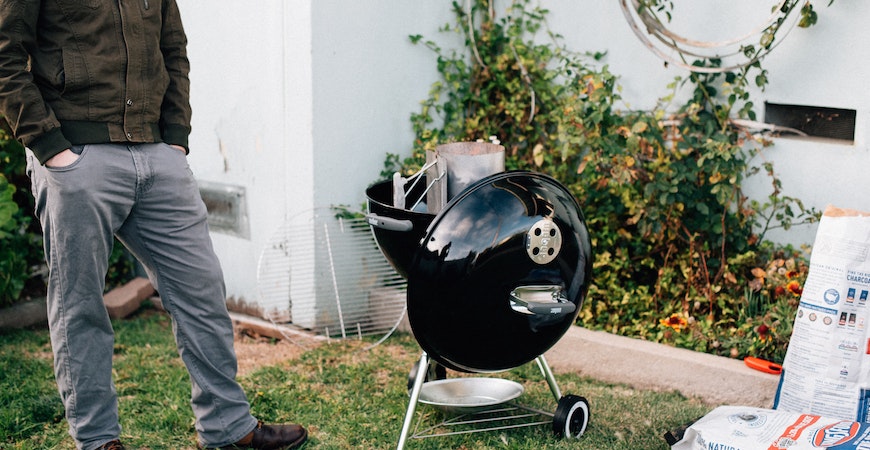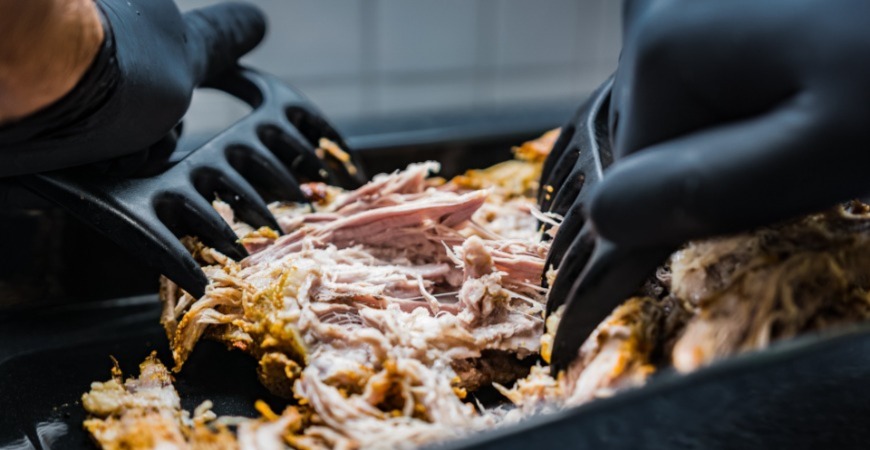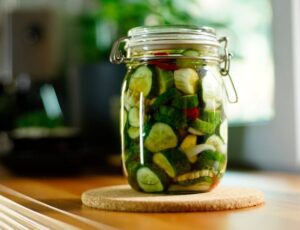
Top Beginner Smoker Tips for Your Labor Day Barbecue
A Labor Day barbecue is a simple pleasure. Indeed, family, friends, and smoked meat are all you need to celebrate the dwindling days of summer.
If you’d like to level up your barbecue skills, the answer isn’t more expensive cuts of meat or fancy condiments. With a few shakes of smoker basics and a heavy dollop of patience, you’ll make this year’s Labor Day celebration the talk of the neighborhood.
Barbecue Smoker Basics
We’re going to use the terms barbecue and smoking interchangeably throughout this piece. While there are subtle differences, they essentially mean the same thing: cooking slabs of meat at low temperatures for lengthy periods.
While you can use a grill to smoke, smoking and barbecuing are not the same thing as grilling. Grilling is very hot and very quick cooking — think hamburgers and hot dogs.
And while there is a bevy of high-tech smokers out there that turn the practice into a matter of plugging in temperatures and times into a smart app, their high cost makes them poor starting smokers. A basic kettle charcoal grill is more economical, versatile, and can last for generations.
In between the more expensive, smartphone-enabled pellet smokers and cheap, durable kettle grills are offset smokers. These smokers tend to offer a rectangle-shaped cooking surface that otherwise looks and operates like a typical charcoal grill.
However, attached to the side is a smaller chamber. This chamber is where wood chunks and charcoal will go during smoking.
Air currents will draw the smoke through the larger compartment containing your meat, cooking it low and slow.
Offsets can be tricky to use at first but can serve as fantastic smokers once you figure out their individual quirks. Additionally, their cost and quality can range from cheap and ineffective to expensive and dependable.
All this said, if you’re just getting started smoking meats, stick with something simple. If you find that you’ve accomplished all you can with an inexpensive smoker or you get tired of babysitting your meat, go ahead and opt for the more expensive options.
Essential Labor Day Barbecue Tools
If you’re sticking with a basic charcoal grill or an offset smoker, make sure you also have these tools at hand.
Baker’s sheets
A quarter or half-sized baking sheet is an easy way to transport meat, give it a place to rest, and even serve as a serving tray.
Charcoal
Briquettes tend to be more uniform with predictable cooking speeds. Lump charcoal can vary greatly in size and cooking temperature, but some believe they impart more smoke flavor.
Chimney starter
Lighter fluid can make barbecue taste chemically. Instead, use a chimney starter to get charcoals glowing hot.
Grill brush or scraper
A well-seasoned grill plate is a beautiful thing that imparts flavor to the meat that’s unique to your smoker. A dirty, gunk-covered grill plate is a fire hazard that makes everything taste of acrid carbon.
Heavy-duty tongs
For maneuvering meat, manipulating hot surfaces, and clicking twice for good luck.
Probe thermometers
Instant meat thermometers require you to open your smoker to take temperatures. A probe thermometer or two — to gauge the temps of both your meat and the air inside the smoker — allows you to keep an eye on things without letting smoke or heat escape.
Silicone basting brush
If you’re adding sauce, a basting brush is your best option for slathering.
Welding gloves
You can mess around with other heatproof gloves, but welding gloves are inexpensive, durable, and can handle even the hottest temperatures.
Wood chunks
The type of wood you use should depend on what you’re smoking. Hickory and mesquite, for example, are great for beef and pork, while apple, maple, and oak are better for poultry and seafood.
How to Clean A Smoker and Get It Ready for Cooking
Cleaning a grill or smoker is pretty simple. Use high heat to burn off any stuck-on gunk and then brush or scrape it off.
That said, barbecue requires low and steady temperatures. So, applying high heat before you need to take things down a notch may not work in your favor.
Instead, the day before you smoke, take care of any cleaning. For a basic charcoal grill or offset smoker, light some charcoal in your chimney until the briquettes become coated in gray ash — usually around 15 minutes.
Then remove your grill plates and dump the charcoal in as if you were going to cook. Close the grill and let the charcoal get things hot inside.
After 15 minutes, open the grill and use your brush or scraper to knock off any stuck-on bits. With the grill plates still hot, you’ll also want to season your grill to keep it nonstick.
For effective seasoning, pour some vegetable oil into a small bowl and place a folded paper towel in it until soaked. Using your tongs, brush the soaked paper towel along the grill plates.
Straightforward Labor Day Smoker Recipes to Impress
When you’re talking barbecue, nothing’s more forgiving than the butt. Pork butt is a shoulder-cut that’s a low-effort smoke and incredibly difficult to mess up.
The only thing you’ll need is time. Depending on the size of your pork butt, it can take anywhere from eight to fourteen hours.
So, this isn’t something to launch into an hour before guests show up. That is unless you plan on serving food sometime in the pre-dawn hours.
And while there are all sorts of debates about when to wrap your pork butt or what dry rub to use, smoking it is essentially foolproof. You can’t get much simpler than this:
- Before smoking, slather your pork butt with mustard and vigorously apply a pre-mixed or custom-made dry rub all over the meat.
- Get your charcoal going and pour them on one half of your grill or in your offset smoking chamber.
- Add wood chunks.
- Place the pork so it’s not over any direct flames or coals.
- Keep the temperature inside your smoker between 250 and 300 degrees by adjusting air vents and adding more charcoal or wood.
- When a fork can slide into your pork and twist with no resistance, the pork is ready to remove.
- Let the pork rest for another 45 minutes before pulling, thrashing, and slicing.
(Here’s a great video recipe that shows how low-effort the smoking process can be.)
Other Labor Day Barbecue Recipes
We recommend starting with smoked pork butt and refining your process to keep Labor Day barbecue guests impressed. That said, we know pork isn’t the be-all, end-all of smoking.
So, here are a few of our other favorite Labor Day smoker recipes and, to help your party planning, their typical cooking times:
- Barbecue smoked beef chuck, a 4 to 5-pound piece of beef chuck, takes around 11 and a half hours.
- Memphis-style dry ribs, two racks of St. Louis spare ribs will take a little more than 2 hours.
- Slow-smoked steak, two thick porterhouses will take 1.5 to 2 hours.
- Smoked cream cheese, two blocks of cream cheese will take an hour.
- Smoked whole chicken, a 3.5-pound chicken, will need a little less than 4 hours.
What You Should Know About Dry Rubs
A quick note about dry rubs: you’ll be able to find a good selection of pre-mixed varieties that are perfectly fine for smoked meats of all kinds.
That said, dry rub is also a place where you can experiment a little. You probably have all the things you need for a great dry rub in your pantry:
- Salt
- Pepper
- Brown sugar
- Pepper flakes
You want the rub to be salty, sweet, and spicy in equal measure. Once you have your base rub down pat, try out additional seasonings, like fresh citrus zest, paprika, oregano, garlic powder, onion powder, and ground mustard.
You can adjust your recipe as needed depending on the type of meat. Poultry and seafood, for instance, don’t usually handle bold or intense rubs as well as pork or beef do.
Of course, an all-purpose barbecue rub recipe tends to taste good on anything and can be prepared well in advance.
This Labor Day, Give Smoking a Try
Barbecue has the power to unite a wide array of people in their love of meats cooked low and slow and kissed with smoke. So, with our simple Labor Day barbecue ideas and smoker recipes at your side, treat everyone to the best backyard party on the block.













